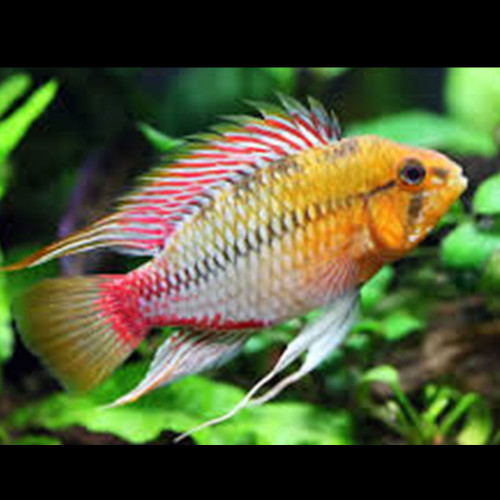Our Guide To Keeping Apistogramma hongsloi Dwarf Cichlid
-
About Fish Species:
- Scientific name: Apistogramma hongsloi
- Common name: Hongslo’s Dwarf Cichlid
- Family: Cichlidae
- Origin: Orinoco River Basin, Colombia and Venezuela
- Adult length: 5 to 7 cm
- Lifespan: 3 to 5 years
- Diet: Omnivore (prefers protein-rich foods)
- Care Level: Moderate
- Temperament: Semi-aggressive (especially during breeding)
-
Tank Setup:
- Apistogramma hongsloi thrive in well-structured tanks with plenty of hiding spots using driftwood, caves, and dense planting.
- A soft sandy substrate is ideal for natural digging behaviour. Leaf litter can help replicate their native blackwater environment.
- A minimum tank size of 60L is recommended for a pair.
-
Water Parameters:
- Temperature: 24 to 28°C (75 to 82°F)
- pH: 5.5 to 7.0
- Hardness: Soft to moderately soft (2–10 dGH)
-
Filtration and Water Flow:
- Use gentle filtration with a sponge or internal filter. Strong currents should be avoided, as these fish prefer calm waters.
- Regular water changes are essential to maintain pristine water conditions.
-
Diet:
- Feed a varied diet of quality flakes or micro pellets, supplemented with frozen or live foods such as bloodworms, daphnia, brine shrimp, and blackworms.
- High-protein foods help enhance colour and breeding condition.
-
Tank mates:
- Keep one male with one or more females in a well-planted tank to reduce aggression.
- Compatible with peaceful fish such as small tetras, pencilfish, hatchetfish, and corydoras.
- Avoid keeping with fin-nippers or large aggressive species.
-
Behavior and Compatibility:
- Apistogramma hongsloi are intelligent and territorial, especially during breeding. Males may become more assertive during courtship and spawning.
- They exhibit complex social behaviours and can be quite interactive with their environment and keeper.
- Provide multiple caves and broken lines of sight to reduce aggression.







